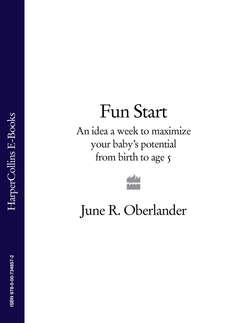Читать книгу Fun Start: An idea a week to maximize your baby’s potential from birth to age 5 - June Oberlander R. - Страница 59
PART II (One—Two Years)
ОглавлениеThe child at age one is beginning to display signs of independence, but she still needs much supervision and guidance. It is important to capture the right moment to introduce the suggested activities to stimulate the child. Planning an exact time each day is not recommended, because young children are not time clocks.Your child may sense regimentation and display negative behaviour.
Try to understand your child by observing her daily patterns of behaviour. Notice when your child seems to be looking for something to do. It could be in the early morning or after a nap in the afternoon. It depends on when she wants to be stimulated with something special.
It is important to be aware that a child of this age has a very short attention span and may not be able to complete a suggested activity at a chosen time. These activities need to be repeated for further stimulation at various times over an extended period of time. The child will develop self-confidence and independence as she becomes aware of her immediate environment.
Books with large colourful pictures that have little detail appeal to children of this age. The child will delight in hearing the books read over and over, even though she often may not sit still long enough for the books to be completed at a given time. Songs, rhymes and rhythms will also capture the child’s interest. Continue to repeat them often, and the child will soon be reciting her favourite ones from memory.
The child at this age is curious and will readily explore her immediate environment by feeling, poking, digging, pulling, pushing, peeking and banging. She will also enjoy stacking and carrying objects, filling and emptying containers, and putting on and taking off the lids of available containers.
Life is a very busy time for a one-year-old child. She is more aware of herself. She will show more affection and will use gestures or point to convey wishes. Gradually, she will begin to communicate more verbally with a limited vocabulary. The more you interact with her by talking, reading, showing and performing activities, the more comfortable your child will be with you. This will serve to instill trust and security that will help to motivate your child’s learning.
